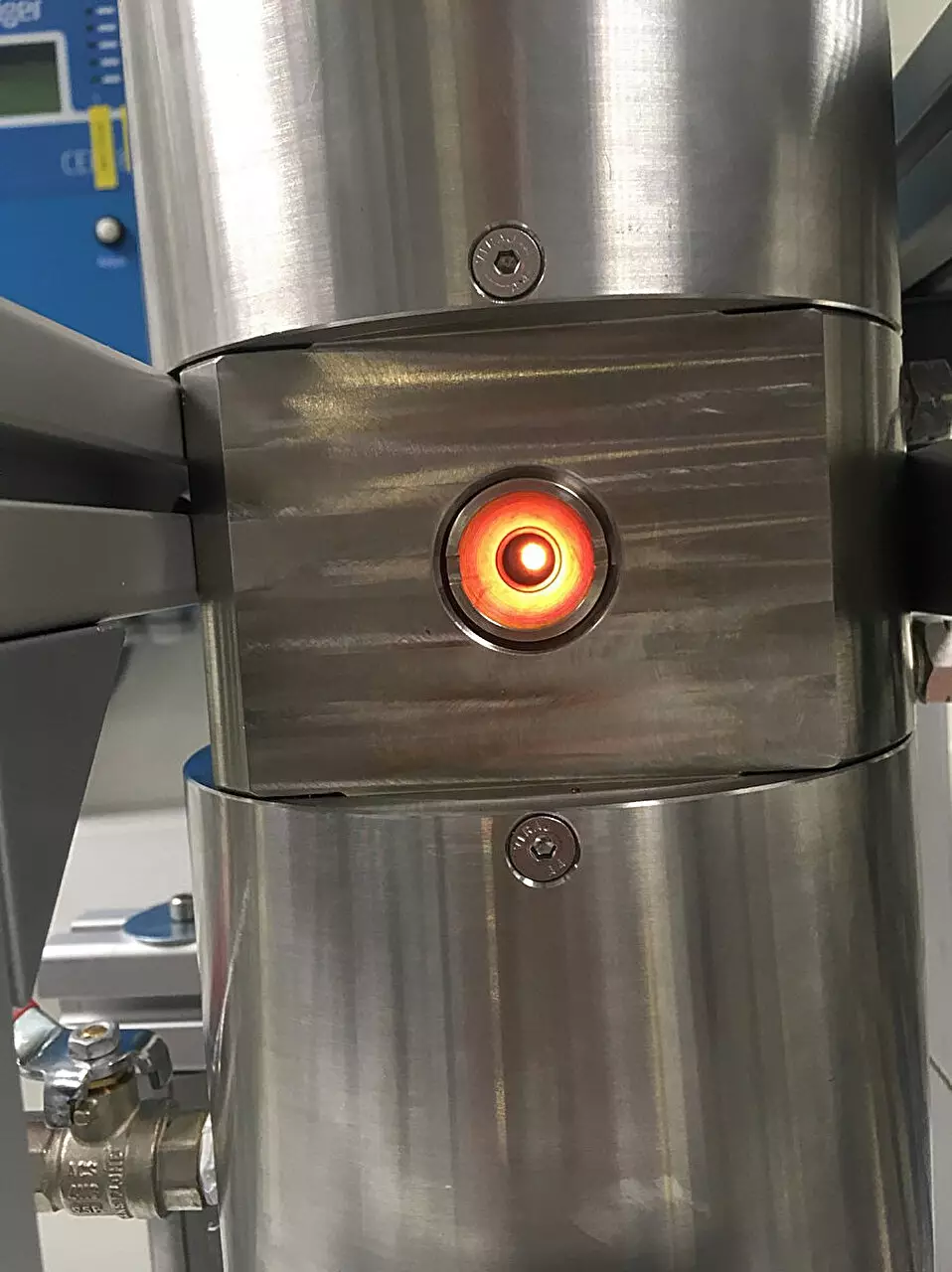In a remarkable development that could reshape our understanding of volcanic eruptions, a team of scientists from The University of Manchester has successfully simulated the intricate process of bubble growth in volcanic magma. This achievement was made possible through the innovative design of a pressure vessel capable of recreating eruptive conditions in a laboratory environment. The results of this groundbreaking study, published on August 16 in *Science Advances*, offer an unprecedented glimpse into the vesiculation kinetics of basaltic magma, a crucial factor in understanding volcanic behavior.
Volcanic eruptions manifest in various forms, from the relatively quiet outpouring of lava to the cataclysmic explosions that can disrupt entire regions. Often, these events trigger widespread consequences that extend well beyond their immediate vicinity—affecting air travel, climate patterns, and even public safety. It is this complexity of volcanic behavior that makes the study of magma dynamics essential, especially regarding gas exsolution and its role in eruption style.
One of the most intriguing findings of the study highlights the intricate relationship between gas and magma, which is pivotal in determining the style of an eruption. This relationship can be likened to the difference between a waiter uncorking a bottle of champagne and a race car driver shaking one to pop the cork. Both scenarios involve the same gas content, yet the outcomes differ drastically. In volcanic systems, how gas is released from magma as it ascends to the surface influences whether an eruption will be effusive or explosive.
The research led by Dr. Barbara Bonechi, a Research Associate in the Department of Earth and Environmental Sciences, sheds light on the mechanisms driving these transitions. By simulating the pressure changes experienced in volcanic conduits, the team was able to observe real-time bubble growth and the coalescence phenomena that occur as magma approaches the Earth’s surface.
What sets this research apart is the combination of the custom pressure vessel and advanced X-ray synchrotron radiography. This technology, specifically provided by the I12-JEEP beamline from Diamond Light Source, enabled scientists to peer through the magma samples and observe the dynamics at play. The versatility of the pressure chamber, which can be finely tuned to mimic the conditions of volcanic plumbing systems at depths of up to 10 kilometers, is pivotal. It allowed researchers to witness how bubbles evolve under various pressures and temperatures—transforming theoretical models into observable data.
The laboratory conditions also provided a controlled environment to examine the processes leading to bubble wall rupture and coalescence. This validation of growth rates aligns well with previous traditional models, reinforcing the reliability of the findings and contributing to a more comprehensive understanding of magma behavior.
Beyond academic curiosity, the implications of this study are profound, particularly concerning hazard assessment and risk mitigation. Understanding how gas behaves in magma systems can allow scientists to predict eruptive behavior with greater accuracy. This, in turn, can enhance preparedness in regions prone to basaltic volcanism.
The insights gleaned from this research could aid in developing models that forecast changes in volcanic activity, potentially saving lives and minimizing damage from future eruptions. Moreover, the study contributes valuable knowledge to the ongoing conversation surrounding active volcanic regions worldwide, emphasizing the need for continued research in this domain.
The innovative simulation of bubble dynamics in volcanic magma opens new pathways for research in volcanology. As scientists delve deeper into understanding the interplay between gas and magma, the advancement in techniques and methodologies promises to unlock further mysteries of one of nature’s most powerful phenomena. With these findings, The University of Manchester establishes itself at the forefront of volcanic research, paving the way for future studies that could greatly enhance our understanding of these geological giants. This progressive approach towards studying volcanic processes not only addresses historical knowledge gaps but also serves as a vital tool for managing natural hazards effectively.


Leave a Reply